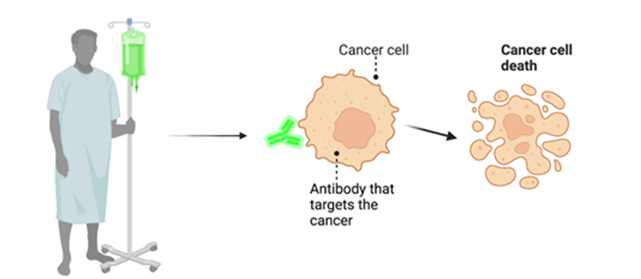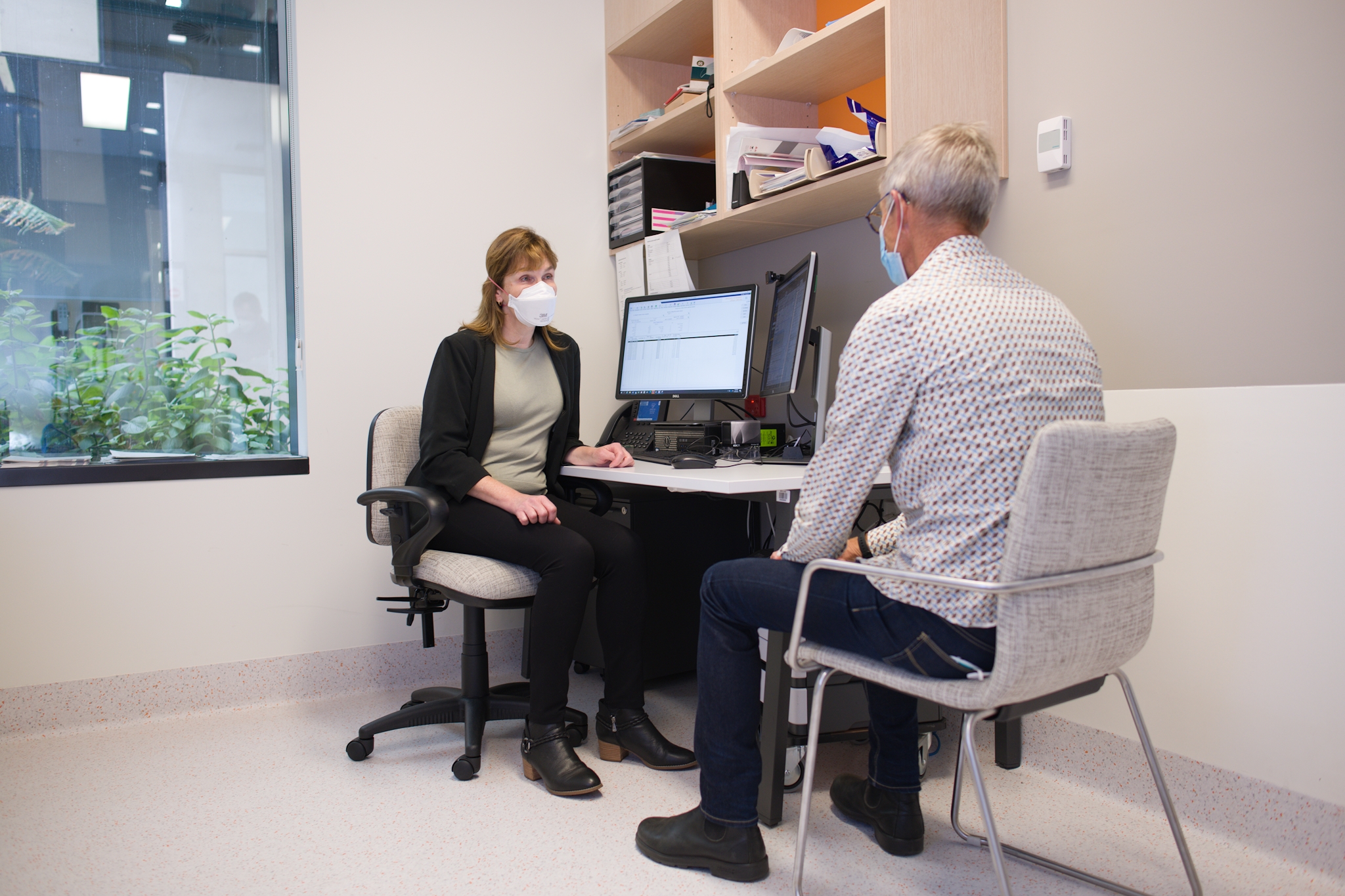
This page provides information on different types of drug therapies, including chemotherapy, one of the most common treatments for CUP. Each section explains the process, benefits and potential side effects.
Chemotherapy is one of the most common treatments for CUP. This is because chemotherapy drugs travel through the bloodstream and can reach or circulate around most parts of your body.
Chemotherapy is the use of drugs to kill cancer cells or slow down their growth by stopping them from multiplying and spreading. The chemotherapy drug/(s) you receive will depend on multiple factors, including the suspected location/(s) and severity of your cancer.
Sometimes radiation therapy and chemotherapy can be used together to try and kill any local collections of cancer cells in the body by both targeting the cancer with drugs, as well as high energy radiation to try and reduce the size of the cancer.
You will usually be given the chemotherapy drugs by drip into a vein (intravenously), but some types are taken by mouth as tablets. The drugs circulate through the bloodstream and can kill cancer cells throughout the body. As different cancer cells respond to different chemotherapy drugs, you may be given a combination of drugs.
Courses of Chemotherapy
Chemotherapy is given in courses known as cycles. Each cycle is followed by a recovery period. Typically, you will have chemotherapy as an outpatient, but sometimes a short stay in the hospital is needed.
The number of treatment cycles you have depends on your situation. With CUP, it is recommended that your doctors test how cancer responds to chemotherapy after a few cycles, where you will usually have some repeat imaging investigations (e.g., a PET scan or CT scan) to visually assess the effect of treatment on your cancer. This will allow you to consider the benefits of continuing treatment against the effects on your quality of life.
Side effects of chemotherapy
Most chemotherapy drugs cause side effects, however, these are usually short-term, and can either be prevented or have their impact reduced. The side effects you experience will be dependent on the drugs you are having.
Common side effects that you may experience include:
Some healthy cells can be sensitive to chemotherapy drugs, such as in the bone marrow. Bone marrow is responsible for making blood cells in the body, including white blood cells, which help your body fight infection. Chemotherapy can reduce the level of white blood cells in your body, which means you are at a greater risk of infection. You will have regular blood tests to monitor your immune system. Unfortunately, some side effects of chemotherapy can be long-term or appear months after treatment. These can include heart problems, nerve damage and fertility issues.
Important: If your temperature rises to 38°C or above, this may indicate an infection and you need to contact your medical team who will advise you to either see your GP or go to your nearest emergency department.
Ask your doctor to explain the potential risks and benefits of the chemotherapy recommended for you.
Further information about Chemotherapy:
Understanding Chemotherapy | eviQ
Common questions about Chemotherapy | eviQ
Hormones are naturally occurring substances in the body and can stimulate certain cancers to grow – for example, oestrogen and breast cancer.
Hormone therapy uses hormones made in a laboratory (synthetic hormones) to block the effect of these natural hormones that are helping cancer to grow.
Your doctor might recommend hormone therapy if your test results show that CUP may have started as a hormone-dependent cancer, such as prostate or breast cancer.
Hormone therapy can be given as either tablets or injections. Sometimes it can be given in combination with other treatments.
Side effects of hormone therapy
Side effects of hormone therapy will be different depending on the treatment you are provided.
Examples of side effects:
If you are undergoing hormone therapy and experience side effects, you should discuss this with your treatment team.
Further information about Hormone Therapy:
Hormone therapy | Cancer Council
Hormone therapy | Cancer Australia
Targeted therapy is a type of drug treatment that attacks particular features of cancer cells, known as molecular targets, to stop cancer from growing and spreading. For example, bevacizumab is a targeted antibody treatment used to block new blood vessels that feed cancer cells. Other targeted treatments can ‘switch on’ or ‘switch off’ particular genes that drive cancer cell growth or target specific proteins within cancer cells to kill them. Many targeted therapy drugs are given orally, but some are given by injection.
To check whether targeted therapy is suitable for your situation, doctors need to test your cancer to see if the cells contain a particular molecular target that is helping cancer grow. This is usually done through a blood test or a biopsy. Different people with the same cancer type may receive different treatments based on their test results. Typically, only a small number of CUP tumours are suitable for targeted therapy.

Side effects of targeted therapy
Although targeted therapy acts on specific genes or proteins of cancer cells, you may still feel some side effects from this treatment. These side effects vary greatly depending on the drug used and how your body responds.
Common side effects of targeted therapy include:
If you are undergoing targeted therapy and experience side effects, you should discuss this with your treatment team.
Further information about Targeted Therapy:
Understanding Targeted Therapy | eviQ
What is Targeted Therapy? | Cancer Council NSW
Targeted Therapy | Cancer Australia
Immunotherapy uses the body’s own immune system to fight cancer. The most common immunotherapy drugs remove barriers that prevent your immune system from detecting (and fighting) the cancer.
Sometimes the results of specialised tests on a CUP tumour may suggest that immunotherapy could help treat the cancer. However, immunotherapy drugs currently approved for other cancers are still being tested within clinical trials to work out how often they help people with CUP.
You can talk to your treatment team for more information about immunotherapy.
Further information about Immunotherapy:
Here are the links to other information pages to learn more about different aspects of treatment. You may also use the quick links on the right side of the page to navigate.

Most people are diagnosed with cancer of unknown primary (CUP) after they have symptoms or become unwell. Some people may be diagnosed during tests for another health condition. When cancer is suspected, you might be referred for tests or to a specialist.

The treatment you have depends on a number of things, including where the cancer is and your general health. A team of doctors and other professionals discuss the best treatment and care for you. The main treatment for Cancer of Unknown Primary is cancer drugs, most commonly chemotherapy. You may also have radiotherapy to help to control your symptoms and hormone therapy.




